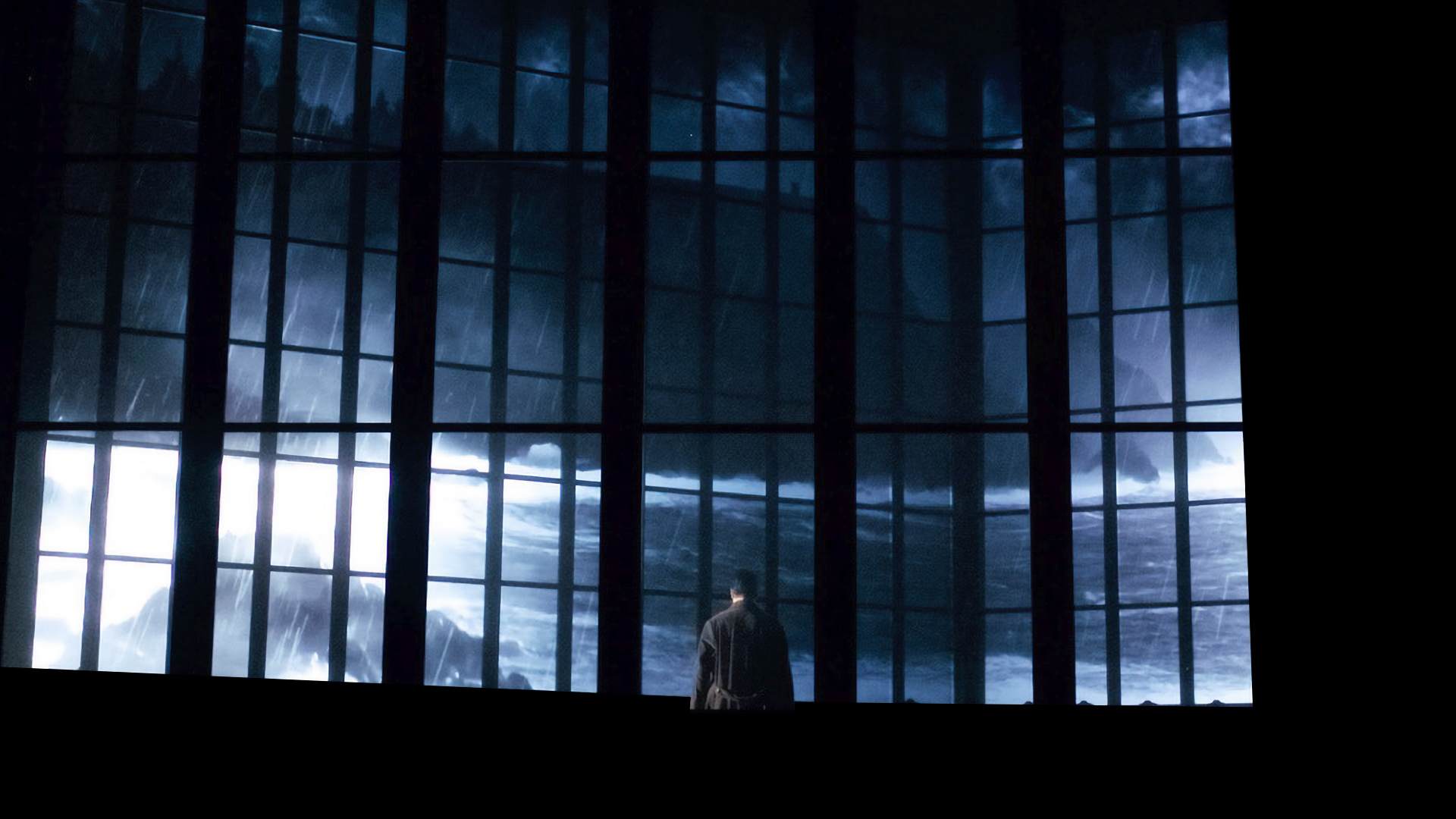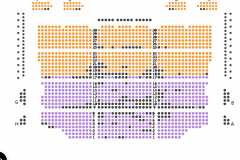Lucia di Lammermoor
Mo | Tu | We | Th | Fr | Sa | Su |
Francesco Ivan Ciampa conducts the Orchestra and Chorus of the Opera Carlo Felice. Directed by Lorenzo Mariani
Tragic drama in three acts by Gaetano Donizetti, libretto by Salvatore Cammarano from the novel The Bride of Lammermoor by Walter Scott
Staging by the Fondazione Teatro Carlo Felice di Genova in co-production with the Fondazione Teatro Comunale di Bologna and the ABAO-OLBE of Bilbao
Synopsis
Time: 17th century
Place: Scotland
Act 1
Scene 1: The gardens of Lammermoor Castle
Normanno, captain of the castle guard, and other retainers are searching for an intruder. He tells Enrico that he believes that the man is Edgardo of Ravenswood, and that he comes to the castle to meet Enrico's sister, Lucia. It is confirmed that Edgardo is indeed the intruder. Enrico reaffirms his hatred for the Ravenswood family and his determination to end the relationship.
Scene 2: By a fountain at the entrance to the park, beside the castle
Lucia waits for Edgardo. In her famous aria "Regnava nel silenzio", Lucia tells her maid Alisa that she has seen the ghost of a girl killed on the very same spot by a jealous Ravenswood ancestor. Alisa tells Lucia that the apparition is a warning and that she must give up her love for Edgardo. Edgardo enters; for political reasons, he must leave immediately for France. He hopes to make his peace with Enrico and marry Lucia. Lucia tells him this is impossible, and instead they take a sworn vow of marriage and exchange rings. Edgardo leaves.
Act 2
Scene 1: Lord Ashton's apartments
Preparations have been made for the imminent wedding of Lucia to Arturo. Enrico worries about whether Lucia will really submit to the wedding. He shows his sister a forged letter seemingly proving that Edgardo has forgotten her and taken a new lover. Enrico leaves Lucia to further persuasion, this time by Raimondo, Lucia's chaplain and tutor, that she should renounce her vow to Edgardo, for the good of the family, and marry Arturo.
Scene 2: A hall in the castle
Arturo arrives for the marriage. Lucia seems distressed, but Enrico explains that this is due to the death of her mother. Arturo signs the marriage contract, followed reluctantly by Lucia. At that point Edgardo suddenly appears in the hall, which leads to the celebrated sextet Chi mi frena in tal momento.[13] Raimondo prevents a fight, and he shows Edgardo Lucia's signature on the marriage contract. Edgardo curses her, demanding that they return their rings to each other. He tramples his ring on the ground, before being forced out of the castle.
Act 3
Scene 1: Wolfcrag
Enrico visits Edgardo to challenge him to a duel. He tells him that Lucia is already enjoying her bridal bed. Edgardo agrees to fight him. They will meet later by the graveyard of the Ravenswoods, near the Wolf's Crag.
Scene 2: A Hall
Raimondo interrupts the marriage celebrations to tell the guests that Lucia has gone mad and killed her bridegroom Arturo. Lucia enters. In the aria "Il dolce suono" she imagines being with Edgardo, soon to be happily married. Enrico enters and at first threatens Lucia but later softens when he realizes her condition. Lucia collapses. Raimondo blames Enrico for precipitating the whole tragedy.
Scene 3: The graveyard of the Ravenswood family
Edgardo is resolved to kill himself on Enrico's sword. He learns that Lucia is dying and then Raimondo comes to tell him that she has already died. Edgardo stabs himself with a dagger, hoping to be reunited with Lucia in heaven.
Program and cast
Characters and interpreters:
Enrico: Franco Vassallo
Lucia: Nina Minasyan
Edgardo: Iván Ayón Rivas
Arturo: Paolo Antognetti
Raimondo: Luca Tittoto
Alisa: Alena Sautier
Normanno: Manuel Pierattelli
Concertmaster and conductor: Francesco Ivan Ciampa
Director: Lorenzo Mariani
Scenes: Maurizio Balò
Costumes: Silvia Aymonino
Lighting: Linus Fellbom
Video: Fabio Massimo Iaquone and Luca Attilii
Orchestra, chorus and technicians of the Opera Carlo Felice Genova
Choirmaster Claudio Marino Moretti
Carlo Felice Theater
Built on the area of Carlo Felice, the new theater, built by Aldo Rossi, recovers an idea already present in Paul Chessa projects and Carlo Scarpa: the creation of a piazza covered with 400 square meters, where the theater it was the ideal link between Galleria Mazzini and Piazza De Ferrari. Distant instead from an architectural point of view are the same Galleria Mazzini and the theater. the square is an open foyer; the walls are covered with stone slabs, and are enriched with columns and metal beams. There are two requirements that the architects wanted to keep in mind in the implementation of the new Carlo Felice theater: first, the need to rebuild it exactly where it was and secondly the desire to equip the new facility with the latest technology. From the latter need arises the imposing fly tower about 63 meters high. In practice the old theater work of Barabino remain the columns, the portico, the Latin inscription and the terrace that overlooks Via XXV Aprile which is accessed by one of the foyer; the current structure is very compact and geometric, the fly tower is a very linear in height developed rectangular, adorned only by a cornice.The auditorium, the foyer and services for the public are contained in a smaller box, where they emphasize the porch and the porch. As for the construction of the new theater are the stone were used for the exterior, plaster and iron, for the interior marble and wood. It is durable material that suggests an image of eternity, security and survival of the building over time. From the covered square, descending a staircase, you enter a room with a capacity of about 200 seats. Equipped with a small stage and independent from the rest of the theater, the hall hosts conferences, lectures and musical events. The interior of the theater entrance wide staircase leads to the closet and still climbing, the first foyer which has an area of 660 square meters and is decorated with frescoes and tapestries. the lantern A characteristic feature of the new Carlo Felice is the lantern visible in the foyer overlooking the lobby; it's a kind a light cone that runs through the building in all its height and it runs through all the plans, bringing the light from the roof to the indoor square. The tower Absolutely unique is the scenario in which they operate the technical units; right in the scenic tower, which houses the machine to move the shows, come together in a delicate balance human labor and sophisticated gear.In fact, the theater has four stages, a main stage, a back stage behind the first two stages and less aligned with each other and managed by integrated electronic and computerized. These scenic handling facilities, computerized lighting, sophisticated booths director for filming and acoustics among the best in Italy are among the features that make the Carlo Felice a factory of emotions among the most important in Italy.

 EN
EN DE
DE IT
IT FR
FR ES
ES RU
RU JP
JP RO
RO
 Seating plan
Seating plan 
